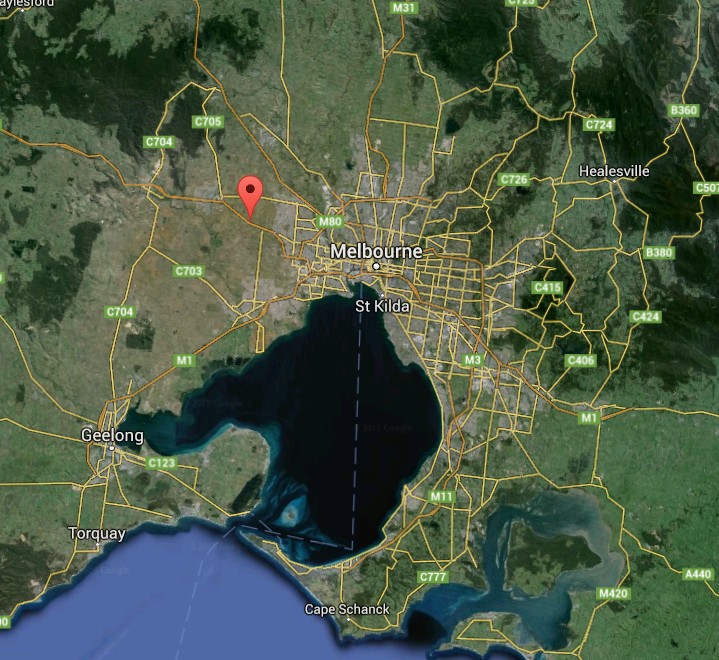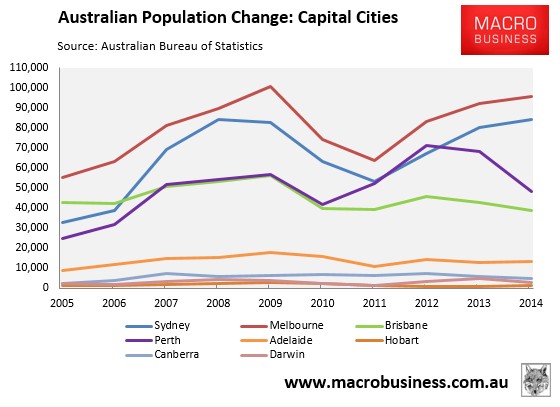Melbourne’s biggest housing BANANA (“Build Absolutely Nothing Anywhere Near Anything”), RMIT planning “expert” Michael Buxton, has spent much of the past decade opposing moves to expand Melbourne’s urban growth boundary (UGB). Curiously, Buxton has also regularly rallied against high rise development across the CBD and inner areas, claiming that it is reducing Melbourne’s livability, while also voicing concern about declining housing affordability.
Buxton’s contradictions were on perfect display in an article penned in The Age back in 2013, whereby he simultaneously opposed sprawl:
Melbourne 2030 sought to redirect a large proportion of outer urban growth to the established city through a legislated urban growth boundary…
The 2013 strategy now proposes a fraudulent limit on outer urban sprawl, a fake policy since the Liberal-National parties in 2010 helped destroy the former growth boundary by expanding it by 43,000 hectares, making irrelevant any contrived limits to growth.
A metropolitan plan should begin with a city’s great assets and protect them.
Opposed density:
Large parts of Melbourne are becoming high rise already. The heritage values of the central city, Victorian-era strip centres, commercial and mixed-use areas and their residential environs, and arterial roads will be destroyed by high and medium-rise development.
Whilst crying over affordability:
This government has no idea about how to promote affordable housing. Melbourne will continue to grow as two city types that entrench unequal access to the best a city can offer. Well-serviced inner and middle-ring areas will become more exclusive, while sprawling new suburbs will condemn many outer residents to the worst standards of infrastructure and facilities.
Today, Buxton has voiced concern over the Victorian Government’s approval of a new housing estate in Rockbank, in Melbourne’s west, which will accommodate, 25,000 new residents:
The 752 hectare development, 29 km north west of the CBD, will include almost 8000 homes, a school and other community facilities. It is bounded by the Western Freeway to the north, Greigs Road to the south, and Paynes Road to the west…
Mr Buxton said the “sorry saga” of the Rockbank showed “everything that’s wrong with Melbourne planning”.
“This kind of development never should have been considered because it’s outside the original green belt, which was legislated in 2003, and there was more than enough land within the urban growth boundary to cater for increased growth,” he said.
“It’s just going to place thousands more people on the extreme fringes of Melbourne where there aren’t services to cater for them. It just keeps happening as if there’s a never-ending supply of land, and there’s not.”
A map showing the location of Rockbank is shown below (see red icon):

Like it or not (and much to my disappointment), Australia’s policy makers are running a high immigration policy, which is having a major impact on Melbourne, where the population has risen by 800,000 people over the past decade (see next chart).

Official projections have Melbourne’s population hitting 5 million by 2025 and potentially 8 million by 2050.
Obviously, these people need somewhere to live, be it in detached homes, apartments or townhouses.
Contrary to Buxton’s claim, Melbourne has an abundant supply of land, as shown in the map above. Anyone that drives north or west of the city will see endless plains of flat, mostly unproductive, grassland that could easily be used for housing, if only it was permitted by government policy.
What Buxton effectively endorses is the UK’s system of growth containment combined with zoning against height in most locations, along with the preservation of existing “heritage”. All this is inimical to achieving affordability, as experience in the UK shows. It is remarkable how little attention is paid to the UK by people advocating similar policies in other parts of the world.
If Buxton gets his way on planning, the end result is likely to be further appreciation of urban land values, deteriorating housing affordability (despite shrinking home sizes), and worsening levels of congestion. Those lucky enough to be pre-existing land holders will benefit from the rising wealth brought about from higher values, whereas those yet to enter the market (and future generations) will suffer immensely. The overall Melbourne economy would likely also lose further competitiveness as escalating land costs feed into the costs of production.
Expecting to achieve a more liveable and affordable city by restricting the urban footprint and opposing in-fill development at the same time as Melbourne’s population surges towards 5 million and beyond, is a contradiction in terms and mutually exclusive.

